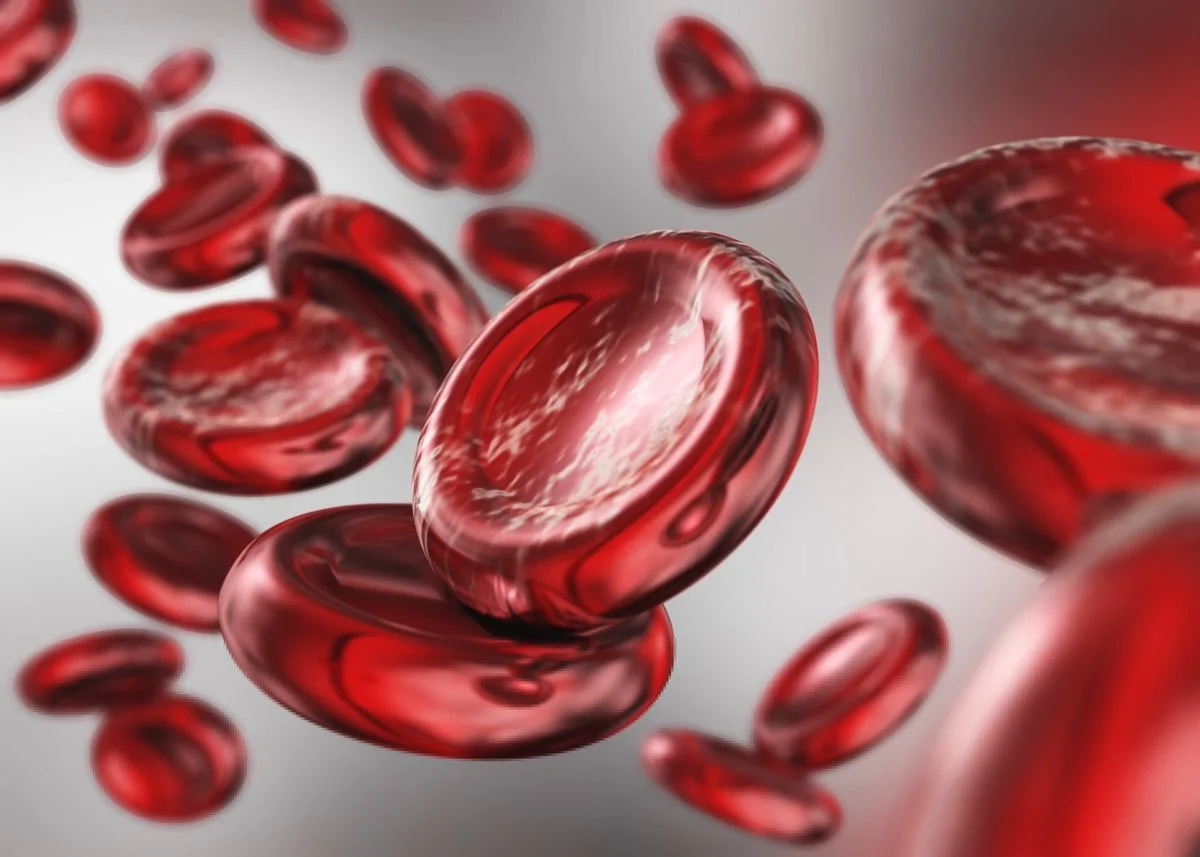Anemia is defined as a reduction in the amount of red blood cells or hemoglobin in the...
Read MoreMacrocytic Anemia | Causes, Signs, Symptoms and Treatments
Introduction
Macrocytic anemia is defined as macrocytosis (mean corpuscular volume (MCV) greater than 100 fL).
In the case of anemia: –
- In non-pregnant females, hemoglobin less than 12 g/dL or hematocrit (Hct) less than 36%.
- In pregnant women, hemoglobin levels are under 11 g/dL.
- In males, hemoglobin is less than 13 g/dL or Hct less than 41%.
Epidemiology
Macrocytosis affects 2% to 4% of the population, 60% of whom are anemic.
The most common cause is alcohol use, which is followed by folate, vitamin B12 deficiency, and medication use.
In middle-aged women, autoimmune conditions are more prevalent.
More cases of macrocytic anemia in older patients are caused by hypothyroidism and primary bone marrow disease.
Causes of Macrocytic Anemia
The cause of macrocytic anemia is classified into one of the following categories, megaloblastic or non-megaloblastic.
The megaloblastic form is due to impaired DNA synthesis caused by a lack of folate and/or vitamin B12.
Non-megaloblastic anemia can be brought on by hypothyroidism, myelodysplastic syndrome (MDS), alcoholism, liver disease, or liver dysfunction.
Regional and environmental factors can affect the most common causes of macrocytosis.
Signs and Symptoms
Various macrocytic anemia presentations are depending on the underlying cause.
Neurologic symptoms and mood disturbances are common complaints among vitamin B12 deficiency patients, including:
- Loss of balance.
- Memory loss.
- Paresthesias.
- Peripheral neuropathy.
The remaining symptoms depend on the underlying cause and include:
- Constitutional symptoms from primary bone marrow disease.
- Gastrointestinal upset from enteral malabsorption.
- Hypoactive metabolism from hypothyroidism.
Folate deficiency has common features except for neuropsychiatric complaints.
Prior surgeries include: –
- Gastric bypass for weight loss.
- Ileal resection for colonic pathologies.
Autoimmune disorders or hemolytic anemias are revealed by personal or family medical histories.
A physical exam may reveal nonspecific anemia findings: –
- Conjunctival pallor.
- Neurological deficits if vitamin B12 levels are low (impaired proprioception or vibration, positive Romberg sign).
- Stigmata of underlying diseases (glossitis from autoimmune atrophic gastritis, hepatosplenomegaly from familial hemolytic anemias, hypopigmentation from vitiligo, or jaundice and spider angiomata from alcohol abuse).
Complications
Patients suffering from chronic megaloblastic anemia caused by vitamin B12 deficiency may develop permanent neurologic damage known as subacute combined neurodegeneration.
Patients will experience peripheral neuropathy, memory loss, gait ataxia, and psychiatric disturbances.
Patients who have underlying diseases that cause macrocytic anemia will experience the associated complications.
Evaluation of Macrocytic Anemia
Initial assessment of macrocytic anemia involves a thorough history and physical examination, followed by a few lab tests (PBS, reticulocyte count, and serum B12).
As MCV represents the mean distribution curve of all RBCs and fails to detect smaller macrocytes, pure RBC indices will underestimate the presence of macrocytosis by 30%.
If the PBS is normal and no megaloblastic RBCs are present, order additional testing for liver and thyroid diseases (aminotransferases and thyroid-stimulating hormone), which are the most common causes of non-megaloblastic anemia.
Reticulocyte count should be checked if there are megaloblastic RBCs on PBS: less than 1% indicates underproduction and more than 2% indicates hyperproliferation caused by hemolysis or hemorrhage (commence hemolytic anemia work-up).
Check the B12 level if hyperproliferative. A deficiency is indicated by readings under 100 pg/mL.
For B12 levels above 400 pg/mL, order RBC folate levels (not serum folate due to lack of sensitivity); low levels indicate folate deficiency, while normal levels may require further investigation with bone marrow evaluation.
Measure homocysteine and methylmalonic acid (MMA) in patients with B12 at 100 pg/mL to 400 pg/mL; these are biochemical compounds important in cell metabolism pathways that use folate and vitamin B12 as cofactors.
Homocysteine is elevated in folate deficiency, whereas both or only MMA are elevated in vitamin B12 deficiency.
Normal values may necessitate a hematology consultation for bone marrow testing.
In patients with abnormal myeloid morphology on PBS, specialist consultations are advised (disordered immaturity, hypo-granulated or hypo-segmented neutrophils, or additional cytopenias).
The work-up for particular causes of megaloblastic anemia should be based on presentation.
Pernicious anemia can be diagnosed by the presence of antibodies to intrinsic factors or parietal cells.
Treatment of Macrocytic Anemia
Macrocytic anemia can be treated by replacing folate or vitamin B12 and targeting the underlying cause.
Give oral folic acid, 1 to 5 mg per day, and promote diets high in folate-containing foods (fortified cereals, leafy vegetables).
Pregnant women, patients taking folate antimetabolites, and people with a history of neural tube defects or who take antiepileptic medications should all take daily supplements to avoid deficiency.
“It is important to not overlook vitamin B12 deficiency as a cause for macrocytic anemia, treatment of folate deficiency but not vitamin B12 deficiency will resolve the anemia but not the neurologic effects.”
To replace vitamin B12 stores, either prescribe 1000 micrograms of vitamin B12 orally daily for one month, followed by 125 to 250 micrograms of vitamin B12 daily, or give patients with pernicious anemia or altered gastrointestinal anatomy 1000 micrograms of vitamin B12 intramuscularly once a week for four weeks, then once a month.
In patients receiving vitamin B12 replacement, doctors may advise empiric folate supplementation (400 micrograms to 1 g/day).
Reticulocytosis should improve within 1 to 2 weeks, and anemia should resolve within 4 to 8 weeks.
Macrocytosis related to alcohol use resolves with abstinence. Other non-megaloblastic anemias improve when the underlying conditions are treated.
Summary
Macrocytic anemia is defined as macrocytosis (mean corpuscular volume (MCV) greater than 100 fL).
Macrocytosis affects 2% to 4% of the population, 60% of whom are anemic.
The cause of macrocytic anemia is classified into one of the following categories, megaloblastic or non-megaloblastic.
The most common cause is alcohol use, which is followed by folate, vitamin B12 deficiency, and medication use.
Neurologic symptoms and mood disturbances are common complaints among vitamin B12 deficiency patients.
Folate deficiency has common features except for neuropsychiatric complaints.
Patients suffering from chronic megaloblastic anemia caused by vitamin B12 deficiency may develop permanent neurologic damage known as subacute combined neurodegeneration.
Initial assessment of macrocytic anemia involves a thorough history and physical examination, followed by a few lab tests (PBS, reticulocyte count, and serum B12).
Macrocytic anemia can be treated by replacing folate or vitamin B12 and targeting the underlying cause.
How useful was this post?
Click on a star to rate it!
Average rating 0 / 5. Vote count: 0
No votes so far! Be the first to rate this post.
I'm sorry that this post was not useful for you!
Let me improve this post!
Tell me how I can improve this post?
References
Heavy menstruation is a risk factor for iron-deficiency anemia due to the amount of iron lost per...
Read MoreIron is involved in many neurological activities, and its deficiency has been linked to anxiety and depressive symptoms,...
Read MoreAnemia was found to be common in COVID-19 patients who were hospitalized, also, it was linked to...
Read MoreRecent Posts
-
SAPHO Syndrome | Causes, Symptoms, Diagnosis & Treatments
-
Systemic Lupus Erythematosus | Causes, Symptoms & Treatments
-
Gastric Ulcers | Causes, Symptoms, Complications & Treatments
-
Wiskott-Aldrich Syndrome | Causes, Symptoms & Treatments
-
The 4 Stages of HIV Infection | Ultimate Guide
-
Good’s Syndrome | Symptoms, Causes & Treatments
-
Acquired Angioedema | Causes, Symptoms & Treatments
-
Rheumatoid Arthritis | Symptoms, Causes, Diagnosis & Treatments
-
Acute Pancreatitis | Causes, Symptoms, Diagnosis and Treatments
-
Pernicious Anemia | Causes, Symptoms, Diagnosis and Treatments
-
Sickle Cell Anemia | Causes, Symptoms, Diagnosis and Treatments
-
Aplastic Anemia | Causes, Symptoms, Diagnosis and Treatments
-
Diamond Blackfan Anemia | Causes, Diagnosis and Treatments
-
Sideroblastic Anemia | Causes, Symptoms & Treatments
-
Organic Dust Toxic Syndrome (ODTS) | Symptoms, and Treatments





